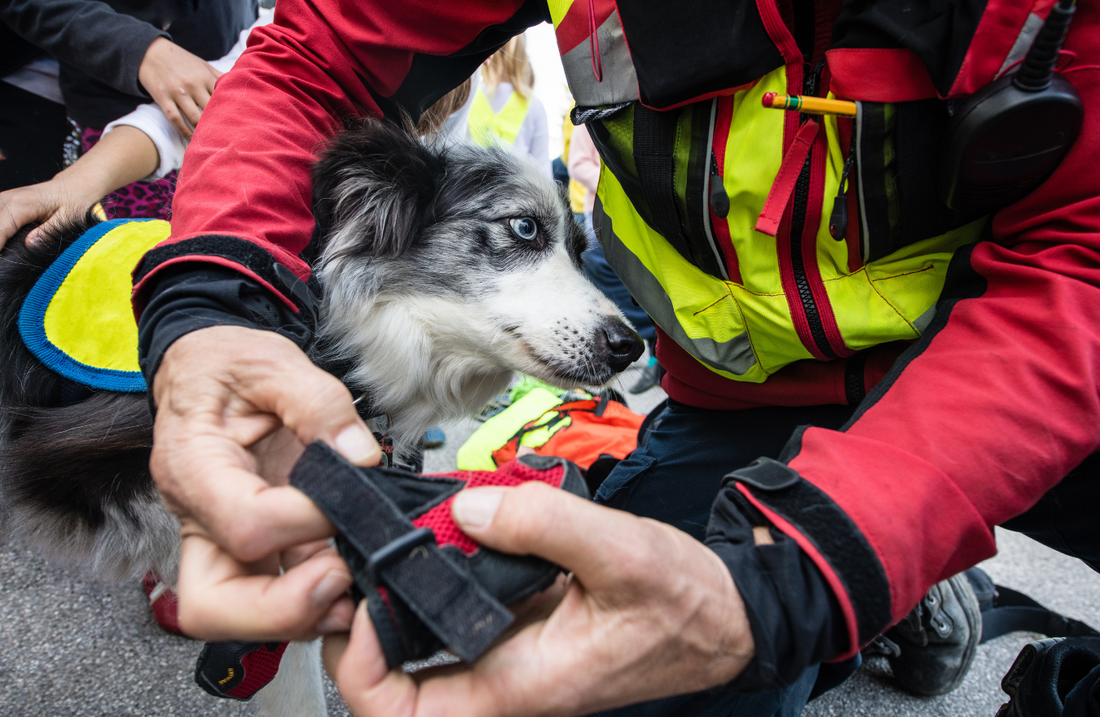Every year, thousands of house fires put families—and their pets—at risk. July is National Pet Fire Safety Month, a reminder to all pet parents to take preventive steps and build a safety plan that includes our four-legged family members.
Pets can’t open doors or call 911, they rely on us to keep them safe. Whether you’re home or away, here’s some important things you need to know to prevent fire dangers and prepare for emergencies involving your pets.
Include Pets in Your Fire Escape Plan
In the event of a fire, seconds matter. Creating an evacuation plan that includes your pets could save their lives.
Tips:
- Practice fire drills with your family and pets. Use treats or toys to guide your dog or cat toward exits.
- Assign one person to be responsible for each pet—especially in multi-pet households.
- Keep pet carriers in easy-to-access areas, particularly for cats or small dogs who may hide when frightened.
- Place leashes, harnesses, or crates near the door or exit routes so you're not scrambling during an emergency.
Prevent Pets from Accidentally Starting Fires
According to the National Fire Protection Association (NFPA), over 1,000 house fires each year are started by pets.
Common causes and prevention tips:
- Stovetops: Pets jumping or nudging knobs can accidentally turn on burners. Use knob covers or remove knobs entirely when you’re not cooking.
- Candles: Curious tails and paws can knock over lit candles. Choose flameless, battery-operated alternatives instead.
- Electrical cords: Chewers, especially puppies and kittens, can damage wires and spark fires. Hide or cover cords when possible.
- Space heaters and fireplaces: Supervise pets around heating appliances. Install barriers to keep them away.
Use a Pet Fire Alert Window Cling
If a fire breaks out while you’re not home, a window decal could help save your pet’s life.
- Attach it to a front window or door.
- Clearly note how many pets are inside (and what kind—dog, cat, bird, etc.).
- Update it as your household changes.
- These stickers alert first responders that animals may need rescuing
Secure Pets & Prepare a Go-Bag
- Keep pets in easily accessible areas near exits—not tucked away in back rooms or basements.
- Avoid crating pets in hard-to-reach areas unless necessary, and keep crates close to doors.
- Use monitored smoke detectors that alert your phone or emergency responders.
- Create a pet emergency “go-bag” with essentials: leash, collar with ID tags, food, water, medications, waste bags, vet records, and a comfort item or toy. Keep it by the door or with your emergency supplies for easy access.
Store the bag near the exit so you can grab it quickly in case of emergency.
After the Fire: Check for Injuries and Stress
Even after the flames are out, your pet might still be at risk.
What to watch for:
- Coughing, trouble breathing, or lethargy—signs of smoke inhalation
- Burns or singed fur
- Hiding, whining, pacing, or behavior changes from stress or trauma
What to do:
- Take your pet to the vet for a full checkup, even if they seem okay.
- Keep them close, calm, and in a familiar environment.
- Re-establish routines quickly to provide comfort and normalcy.
Peace of Mind Comes from Preparation
We never want to imagine a fire in our homes—but preparation is the best form of protection. With just a few steps, you can drastically increase your pet’s chance of survival.
Recommended Resources:
American Red Cross Keep Your Pets Safe
Email or tag us on your thoughts! As well as photos and comments to hello@yeti.pet or Tag us on social media.
Follow us on social media!
Subscribe to our emails to stay connected and learn about our exclusive saving offers.

